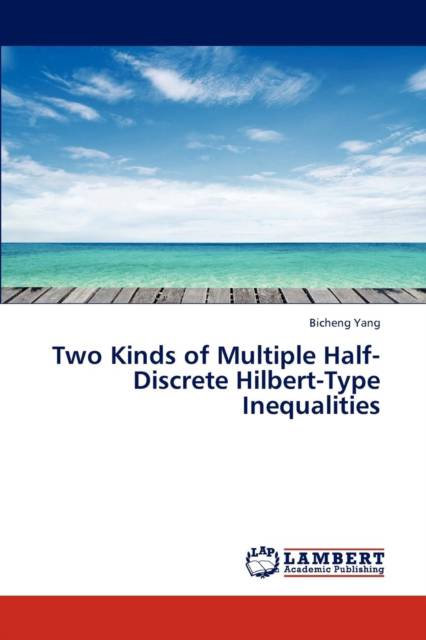
- Afhalen na 1 uur in een winkel met voorraad
- Gratis thuislevering in België vanaf € 30
- Ruim aanbod met 7 miljoen producten
- Afhalen na 1 uur in een winkel met voorraad
- Gratis thuislevering in België vanaf € 30
- Ruim aanbod met 7 miljoen producten
Zoeken
€ 103,45
+ 206 punten
Omschrijving
In 1908, H. Wely published the well known Hilbert s inequality. In 1925, G. H. Hardy gave an extension of it by introducing one pair of conjugate exponents. The Hilbert-type inequalities are a more wide class of analysis inequalities which are including Hardy-Hilbert s inequality as the particular case. By making a great effort of mathematicians at about one hundred years, the theory of Hilbert-type integral and discrete inequalities has now come into being. This book is a monograph about the theory of multiple half-discrete Hilbert-type inequalities. Using the methods of Real Analysis, Functional Analysis and Operator Theory, the author introduces a few independent parameters to establish two kinds of multiple half-discrete Hilbert-type inequalities with the best possible constant factors. The equivalent forms and the reverses are also considered. As applications, the author also considers some double cases of multiple half-discrete Hilbert-type inequalities and a large number of examples. For reading and understanding this book, readers should hold the basic knowledge of Real analysis and Functional analysis.
Specificaties
Betrokkenen
- Auteur(s):
- Uitgeverij:
Inhoud
- Aantal bladzijden:
- 220
- Taal:
- Engels
Eigenschappen
- Productcode (EAN):
- 9783844322682
- Verschijningsdatum:
- 13/12/2012
- Uitvoering:
- Paperback
- Afmetingen:
- 150 mm x 220 mm
- Gewicht:
- 327 g

Alleen bij Standaard Boekhandel
+ 206 punten op je klantenkaart van Standaard Boekhandel
Beoordelingen
We publiceren alleen reviews die voldoen aan de voorwaarden voor reviews. Bekijk onze voorwaarden voor reviews.








